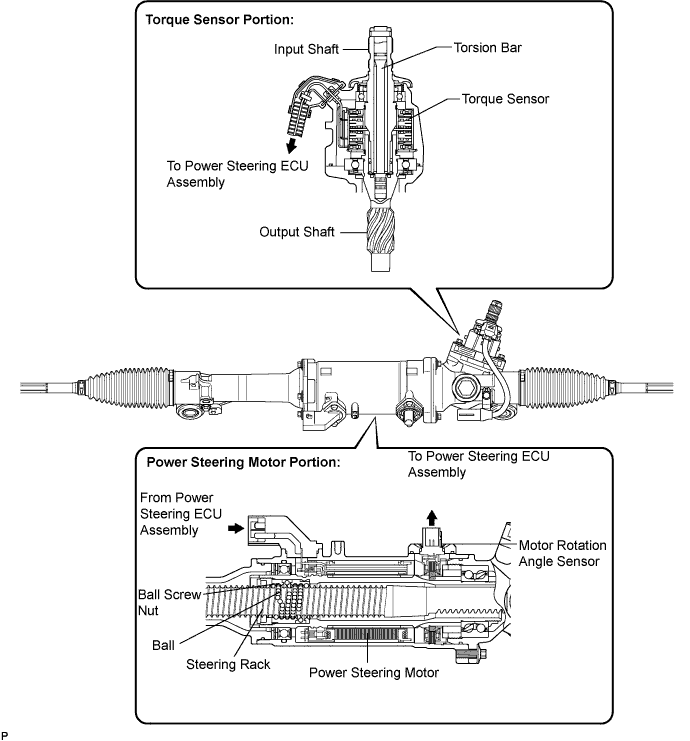Electronic Power Steering System -- System Description |
| DESCRIPTION |
The EPS system generates assist torque to assist steering effort through the operation of the motor installed on the power steering gear assembly.
The direction and amount of power assistance are determined by signals from the torque sensor, and controlled in accordance with vehicle speed. As a result, steering effort is controlled to be light during low speed driving and moderately high during high speed driving.
| FUNCTIONS OF COMPONENTS |
| Components | Function |
| Power Steering ECU Assembly | Calculates degree of assistance needed based on steering torque and vehicle speed. Drives the motor based on motor electric angle obtained from the motor rotation angle sensor. |
| Boosts battery voltage to generate motor drive voltage. | |
| Restricts power assistance to protect the system if the motor and ECU overheat. | |
| Torque Sensor | Detect steering effort generated when the steering wheel is turned. |
| Power Steering Motor | Located coaxially with the rack shaft. Its rotation is converted to the rectilinear motion of the steering rack via the ball screw nut and ball. |
| Motor Rotation Angle Sensor | Detects motor rotation angle. |
| Combination Meter (PS Warning Light) | Upon receiving a signal from the power steering ECU in the event of a system malfunction, the meter ECU illuminates the PS warning light. |
| Skid Control ECU | Transmits speed sensor signals to the power steering ECU. |
| ECM | Transmits engine speed signals to the power steering ECU. |
| OPERATION EXPLANATION |

The torque sensor are mounted on the input shaft to the main shaft and on the output shaft to the pinion shaft. The input and output shafts are joined by a torsion bar.
If the steering wheel is turned, the torsion bar twists, resulting in a difference in the rotation angle detected by torque sensor. The power steering ECU assembly calculates torque based on this difference.
The power steering ECU assembly calculates proper assisting torque, according to vehicle speed, based on the torque obtained in the previous step. Then the ECU controls the motor drive circuit in order to cause it to generate assisting torque.
A ball screw nut is attached to the motor shaft. It converts the rotational motion of the motor into the rectilinear motion of the steering rack via the ball.
The assisting force generated in the above process will reduce the steering effort required by the driver.